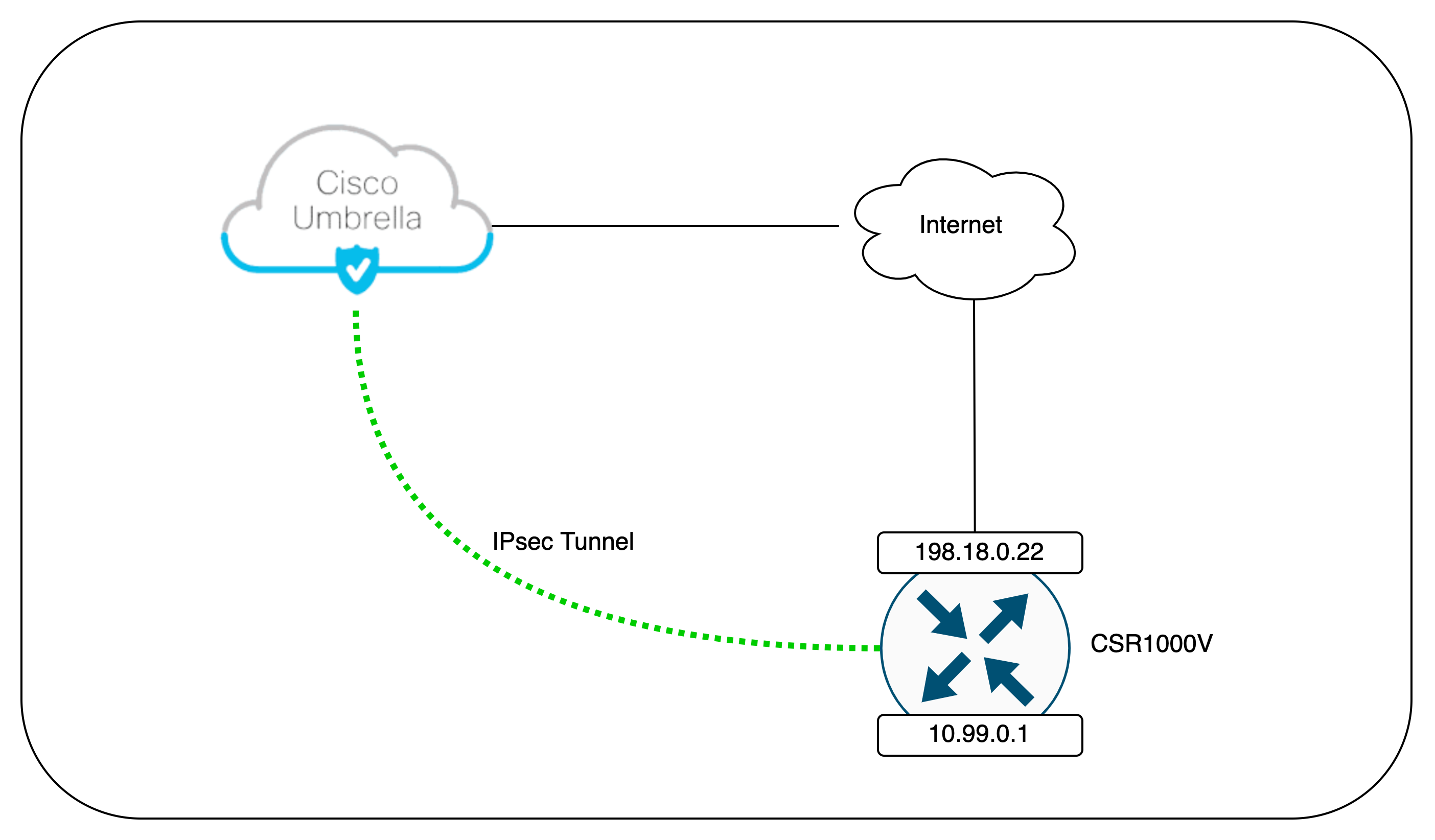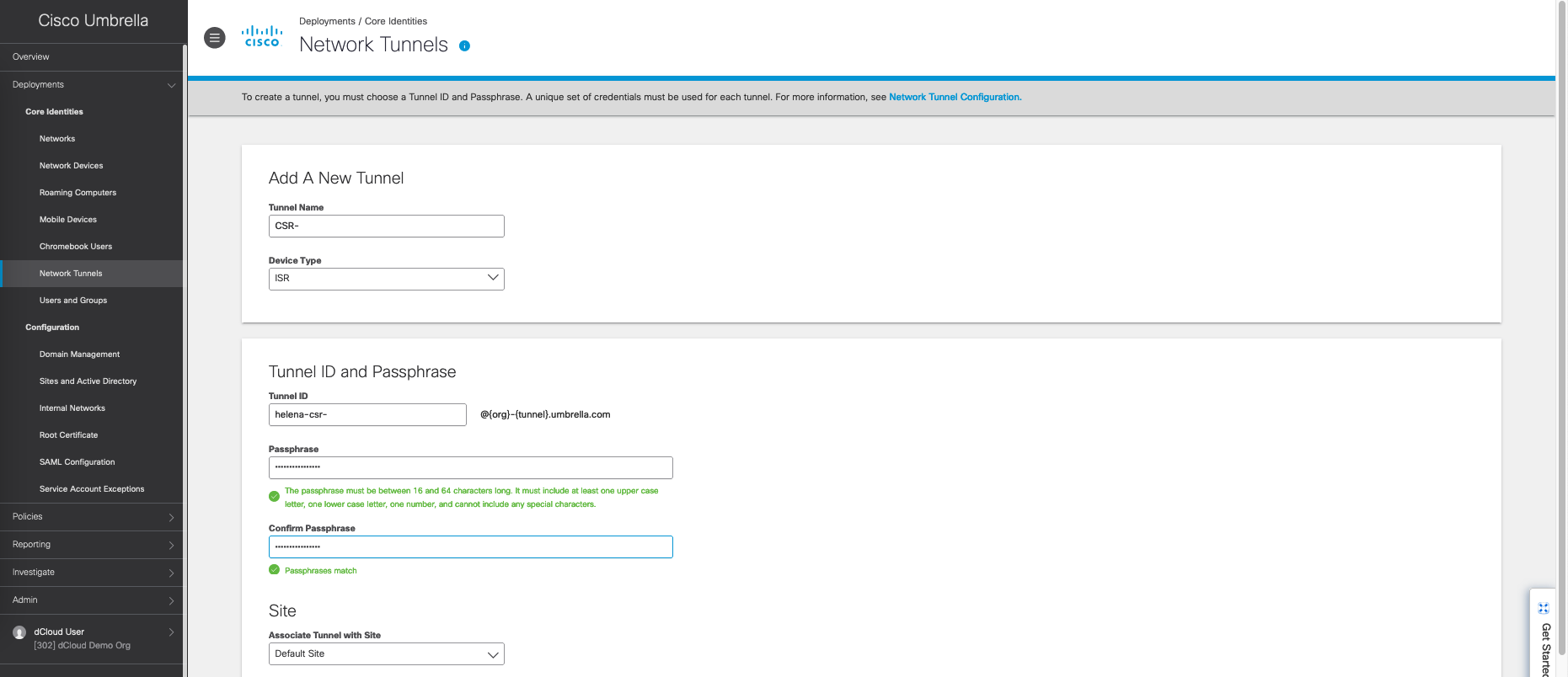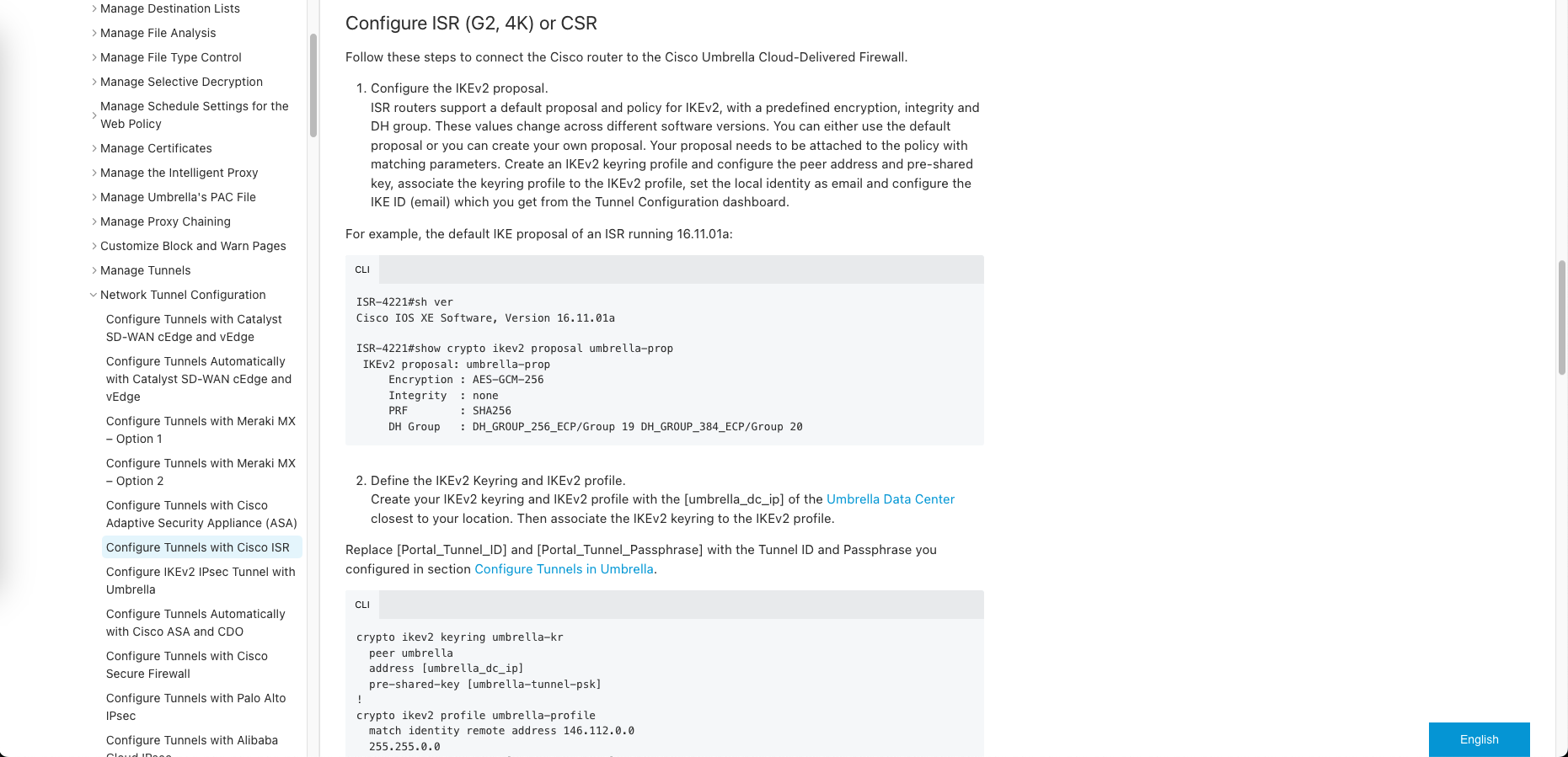Cisco Umbrella - Secure Internet Gateway (SIG) with Cisco Router
A Secure Internet Gateway (SIG) is a cloud-based service that provides secure and filtered access to the internet for users and devices within an organization.
SIG uses tunnels to establish secure connections between an organization’s network and the cloud-based security service. This tunnel encrypts the traffic between the organization’s network and the SIG service, ensuring the confidentiality and integrity of data as it travels over the internet.
Deployment Topology
On this deployment, we will establish a IPsec Tunnel connection from the CSR1000V Router to the Umbrella Cloud, making all the internet traffic coming form the Inside Segment will be routed to the Umbrella first before heading to the Internet
Configuring Network Tunnel on Umbrella
On Cisco Umbrella, go to Deployments » Network Tunnels, add new for our CSR router
Here’s after the tunnel added, the entry is present with status of Unestablished
Configuring Network Tunnel on CSR Router
Cisco actually provides a great deployment guide here to configure tunnel on CSR/ISR Routers
First we define a keyring named “umbrella-kr” for storing pre-shared keys used in the IKEv2 negotiation
1
2
3
4
crypto ikev2 keyring umbrella-kr
peer umbrella
address 146.112.113.8
pre-shared-key <password set on umbrella>
- Set the address to the closest umbrella DC, check out this document for the details
- In IKEv2 (Internet Key Exchange version 2), a keyring is used to store pre-shared keys (PSKs) and associate them with specific remote peers for authentication during the VPN negotiation process.
Next we define an IKEv2 profile named “umbrella-profile” for configuring the IKEv2 VPN connection
1
2
3
4
5
6
7
crypto ikev2 profile umbrella-profile
match identity remote address 146.112.0.0 255.255.0.0
identity local email <email id set on umbrella>
authentication remote pre-share
authentication local pre-share
keyring local umbrella-kr
dpd 10 3 periodic
Next define an IPSec transform set named “umbrella-ts” and set the mode to be “tunnel”
1
2
crypto ipsec transform-set umbrella-ts esp-gcm 256
mode tunnel
- IPSec transform set specifies the encryption and authentication algorithms and other parameters used for securing IP traffic within an IPSec VPN tunnels
After that define an IPSec profile named “umbrella” to use the “umbrella-ts” transform set for encryption and the “umbrella-profile” IKEv2 profile for the VPN negotiation
1
2
3
crypto ipsec profile umbrella
set transform-set umbrella-ts
set ikev2-profile umbrella-profile
Next define an IKEv2 proposal named “umbrella-proposal” to specify parameters for the IKEv2 negotiation
1
2
3
4
crypto ikev2 proposal umbrella-proposal
encryption aes-cbc-256
integrity sha256
group 14
Next define an IKEv2 policy named “umbrella” to configure IKEv2 parameters matching the outside interface IP Address and to use the “umbrella-proposal” created earlier
1
2
3
crypto ikev2 policy umbrella
match address local 198.18.0.22
proposal umbrella-proposal
Then define a tunnel interface named “Tunnel1” with the source of the outside interface and remote destination of chosen Umbrella DC
1
2
3
4
5
6
7
interface Tunnel1
ip unnumbered GigabitEthernet1
ip tcp adjust-mss 1280
tunnel source GigabitEthernet1
tunnel mode ipsec ipv4
tunnel destination 146.112.113.8
tunnel protection ipsec profile umbrella
Next create an access-list for the tunnel access
1
2
ip access-list extended traffic-to-umbrella
permit ip any any
Then define a route map named “umbrella-route-map” to match the access-list “traffic-to-umbrella” for policy-based routing
1
2
3
route-map umbrella-route-map permit 10
match ip address traffic-to-umbrella
set interface Tunnel1
Lastly, apply the route-map to Inside Interface
1
2
interface GigabitEthernet 2
ip policy route-map umbrella-route-map
And thats pretty much it
Verfying Tunnel Status
On CSR, run “show crypto session detail” to see the tunnel connection
And on Umbrella, we should see the connection also becomes active
Now all the internet traffic from the inside segment will be routed to the Umbrella as the Secure Internet Gateway
Here we can see the reports of all traffic coming in from the inside segment of 10.99.0.0/24 being inspected by Cisco Umbrella before being forwarded to the actual destination







